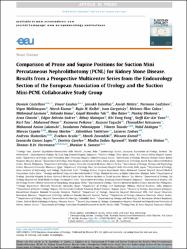| dc.contributor.author | Castellani, Daniele | |
| dc.contributor.author | Gauhar, Vineet | |
| dc.contributor.author | Kalathia, Jaisukh | |
| dc.contributor.author | Mehta, Amish | |
| dc.contributor.author | Gadzhiev, Nariman | |
| dc.contributor.author | Malkhasyan, Vigen | |
| dc.contributor.author | Kumar, Nitesh | |
| dc.contributor.author | Kalbit, Rajiv H. | |
| dc.contributor.author | Gorgotsky, Ivan | |
| dc.contributor.author | Gokce, Mehmet Ilker | |
| dc.contributor.author | Laymon, Mahmoud | |
| dc.contributor.author | Inoue, Takaaki | |
| dc.contributor.author | Tak, Gopal Ramdas | |
| dc.contributor.author | Baker, Abu | |
| dc.contributor.author | Dholaria, Pankaj | |
| dc.contributor.author | Chawla, Arun | |
| dc.contributor.author | Beltra´n-Sua´rez, Edgar | |
| dc.contributor.author | Mahajan, Abhay | |
| dc.contributor.author | Fong, Khi Yung | |
| dc.contributor.author | Yuen, Steffi Kar-Kei | |
| dc.contributor.author | Tan, Karl | |
| dc.contributor.author | Omar, Mohamed | |
| dc.contributor.author | Petkova, Kremena | |
| dc.contributor.author | Taguchi, Kazumi | |
| dc.contributor.author | Ketsuwan, Chinnakhet | |
| dc.contributor.author | Lakmichi, Mohamed Amine | |
| dc.contributor.author | Palaniappan, Sundaram | |
| dc.contributor.author | Tanıdır, Yılören | |
| dc.contributor.author | Akdogan, Nebil | |
| dc.contributor.author | Cepeda, Marcos | |
| dc.contributor.author | Martov, Alexey | |
| dc.contributor.author | Tokhtiyev, Zelimkhan | |
| dc.contributor.author | Tzelves, Lazaros | |
| dc.contributor.author | Skolarikos, Andreas | |
| dc.contributor.author | Acuna, Esteban | |
| dc.contributor.author | Zawadzki, Marek | |
| dc.contributor.author | Kamal, Wissam | |
| dc.contributor.author | Lopes, Leonardo Gomes | |
| dc.contributor.author | Gorelov, Dmitriy | |
| dc.contributor.author | Agrawal, Madhu Sudan | |
| dc.contributor.author | Mohan, Vaddi Chandra | |
| dc.contributor.author | Herrmann, Thomas, R.W. | |
| dc.contributor.author | Somani, Bhaskar K. | |
| dc.date.accessioned | 2025-10-30T10:19:24Z | |
| dc.date.available | 2025-10-30T10:19:24Z | |
| dc.date.issued | 2025 | en_US |
| dc.identifier.citation | D. Castellani, V. Gauhar, J. Kalathia et al., Comparison of Prone and Supine Positions for Suction Mini Percutaneous Nephrolithotomy (PCNL) for Kidney Stone Disease. Results from a Prospective Multicenter Series from the Endourology Section of the European Association of Urology and the Suction Mini-PCNL Collaborative Study Group, Eur Urol Focus (2025). | en_US |
| dc.identifier.issn | 2405-4569 | |
| dc.identifier.uri | https://www.sciencedirect.com/science/article/pii/S2405456925002895?via%3Dihub | |
| dc.identifier.uri | https://doi.org/10.1016/j.euf.2025.10.003 | |
| dc.identifier.uri | https://hdl.handle.net/20.500.12780/1252 | |
| dc.description.abstract | Background and objective: The optimal patient position for percutaneous nephrolitho tomy (PCNL) remains a matter of debate. Our aim was to evaluate the association
between prone versus supine positioning and perioperative and postoperative outcomes
of suction mini-PCNL.
Methods: In this prospective multicenter observational study, we analyzed data for 1534
patients treated in 30 centers between March and November 2024. Outcomes included
the stone-free rate (SFR) assessed via 30-d computed tomography, and complication
rates. Multivariable analysis was used to assess the effect of prone positioning on
stone-free status (zero fragments) and overall complications, with adjustment for other
covariates.
Key findings and limitations: There were 653 patients (43%) in the prone group and 881
(57%) in the supine group. Patient demographics were similar between the groups,
except for body mass index. In terms of Guy’s stone score, the prone group had a higher
proportion of score 1 stones (60% vs 47%) and the supine group a higher proportion of
score 4 stones (6.9% vs 3.2%). Median stone volume did not differ significantly, at
1636 mm3 in the supine group and 1725 mm3 in the prone group (p = 0.7). The prone
group had more frequent use of spinal anesthesia (68% vs 29%; p < 0.001),
fluoroscopy-only guidance (86% vs 61%; p < 0.001), and supracostal access (36% vs
22%; p < 0.001). Surgical time, pain scores, hospital length of stay, and readmission rates
were similar between the groups. Zero-fragment stone-free rates were comparable (85%
prone vs 81% supine; p = 0.052). Prone position was associated with higher rates of blood
transfusion (2.8% vs 0%; p < 0.001), renal pelvic perforation (2.8% vs 0.23%; p < 0.001),
and pneumothorax (1.5% vs 0%; p < 0.001). Multivariable analysis revealed that prone
positioning was not significantly associated with grade A stone-free status (odds ratio
0.92, 95% confidence interval [CI] 0.66–1.29; p = 0.6) or the overall complication rate
(odd ratio 0.87, 95% CI 0.59–1.28; p = 0.5). The nonrandomized study design may have
introduced selection bias and limited our ability to establish causal relationships
between variables.
Conclusions and clinical implications: Both prone and supine positioning for PCNL
achieved excellent SFRs with acceptable safety profiles. | en_US |
| dc.language.iso | eng | en_US |
| dc.publisher | Elsevier | en_US |
| dc.relation.isversionof | 10.1016/j.euf.2025.10.003 | en_US |
| dc.rights | info:eu-repo/semantics/openAccess | en_US |
| dc.subject | Kidney calculi | en_US |
| dc.subject | Prone position | en_US |
| dc.subject | Supine position | en_US |
| dc.subject | Percutaneous nephrolithotomy | en_US |
| dc.subject | Sheath | en_US |
| dc.subject | Suction | en_US |
| dc.title | Comparison of prone and supine positions for suction mini percutaneous nephrolithotomy (PCNL) for kidney stone disease: Results from a prospective multicenter series from the Endourology Section of the European Association of Urology and the Suction Mini-PCNL Collaborative Study Group | en_US |
| dc.type | article | en_US |
| dc.contributor.department | İstanbul Kent Üniversitesi, Yüksekokullar, Sağlık Hizmetleri Meslek Yüksekokulu, Ameliyathane Hizmetleri Programı | en_US |
| dc.contributor.authorID | 0000-0003-1607-5819 | en_US |
| dc.contributor.institutionauthor | Tanıdır, Yılören | |
| dc.relation.journal | European Urology Focus | en_US |
| dc.relation.publicationcategory | Makale - Uluslararası Hakemli Dergi - Kurum Öğretim Elemanı | en_US |


















